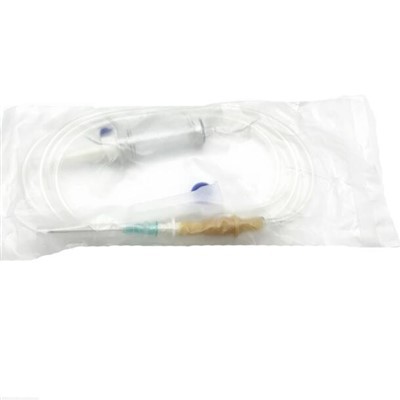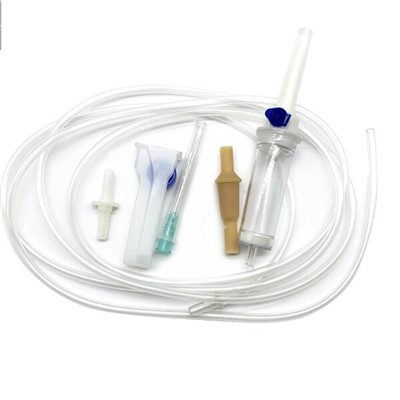What Is Urine Bag
A urine bag is a medical device used to collect and process urine in the body. It's usually made of plastic and designed to connect to a catheter, a thin tube inserted into the bladder. Urine bags are used when patients cannot control urination due to illness, injury, or surgery. The bag collects urine which can then be disposed of hygienically. Urine bags come in different sizes and can be used for both short-term and long-term urine drainage.
Benefits of Urine Bag
Convenient and hygienic
Urine bags are user-friendly and highly hygienic, making them a convenient option for people who require long-term urinary collection.
Portable
Urine bags are available in different sizes, including larger ones that can hold urine for longer periods, making them the perfect option for travel or long periods of immobilization.
Better for infection control
Guidelines suggest that single-use bags are better for infection control which is important for catheter users.
Can monitor urine output
Measuring urine output is essential for individuals who have limited hydration, kidney or bladder issues, as urine bags allow for easy collection and measurement of urine output.
-
1500ML Disposable Urine Drainage Bag
Luxury urine bags are medical supplies used to collect and contain urine from patients who are
Add to Inquiry -
Disposable Foley Catheter Urine Bag
Urinary bags, also known as catheter bags, offer numerous advantages for people who have difficulty
Add to Inquiry -
Urinary leg bag provide an efficient solution for urinary incontinence in the day time. The bag
Add to Inquiry -
Urine drainage bags collect urine. A bag will attach to a catheter (usually called a Foley
Add to Inquiry -
Packing: 1pc/PE bag, 250pcs/ctn, 56*38*32cm, G.W:12kg N.W:11kg. Color :Transparent Or Translucence.
Add to Inquiry -
Volume: 1500ML or 2000ML. Color: Transparent Or Translucence. Tube size: Diameter 6.5mm, Length
Add to Inquiry -
Material: Medical Grade PVC. Volume: 600ml, 750ml, 900ml. Attention: Disposable, for single use
Add to Inquiry -
Luxury Foley Catheter Urine Bag
Type: T valve/push-full valve/screw valve/without valve. Medical pvc tube: Ø6.0x90cm/φ8.0*110cm.
Add to Inquiry -
A urine collection bag is a medical device used to collect urine from a patient who is unable to
Add to Inquiry -
Medical Supplies Catheter Leg Bags
Tube Length(Available): 10cm,30cm,50cm. Certificate: CE & ISO. Packing: Bulk Pack/PE bag/Blister
Add to Inquiry -
Urometer Urine Bag For Patients
Color: Transparent . Stock: No. Quality:Certification ISO13485;CE . Style :Urinemeter
Add to Inquiry -
Supply Ability Supply Ability:100000 Piece/Pieces per Month Packaging & delivery Port:Ningbo or
Add to Inquiry

Quality control
We have built a professional QC team to accurately inspect every raw material and every process of production.
Professional team
Our professional team collaborate and communicate effectively with one another, and are committed to delivering high-quality results. They are capable of handling complex challenges and projects that require their specialized expertise and experience.
Customized services
We understand that each customer has unique manufacturing needs. That’ s why we offer customization options to cater to your specific requirements.
One stop solution
From the begining inquiry and throughout the entire process until you receive the goods. we are dedicated to supporting you every step of the way.
Disposable bag
This type of urine bag is designed for one-time use and is commonly used in hospitals, clinics, and at home. They are convenient and easy to dispose of after use.
Collection bag
This type of urine bag is generally used to collect urine over an extended period of time. They typically have a capacity of around 2 liters and can attach to a catheter for easy drainage.
Leg bag
This is a smaller urine bag that is designed to be worn on the leg, ankle, or thigh. It is commonly used by people who need to drain urine directly from their bladder. They are discreet and allow the wearer to move around freely.
Pediatric bag
These are urine bags that are designed for use on infants, toddlers, and young children. They are smaller in size and can be attached directly to their skin, or to a catheter in some instances.

Material of Urine Bag
Most collection bags are made of plastic such as polyvinyl chloride (PVC), polyvinylidene fluoride (PVDF) or polyethylene. They can cause perspiration, and chafing resulting from movement of the bag against the skin has been reported.Some bags have a cloth-like backing which is intended to improve comfort.The choice of material depends on factors such as durability, comfort, and safety for the user.
Craftsmanship of Urine Bag
The craftsmanship of a urine bag is critical since it is a medical device that is used to collect potentially contaminated bodily fluids. To ensure the safety and effectiveness of the urine bag, it must be made with high-quality materials, be properly designed, and manufactured to strict quality standards.The manufacturing process involves several steps, including molding, sealing, assembly, and packaging. The bags are usually tested for quality and functionality before they are released to the market.

Capacity
Body-worn collection bags are available in different sizes. Small bags tend to be more discreet under clothes, but require more frequent emptying. On the other hand, larger body-worn bags may be more noticeable under clothes and will be heavier when full, so that they may be more difficult to hold in place.
Ease of emptying
Body-worn collection bags are emptied using a tap at the bottom of the bag. The design and performance of the tap is a factor that users consistently focus on.
Comfort
Comfort can be affected by several factors: the collection bag itself, the method used to hold it in place, and the way it is connected to the catheter or sheath.
Urine bag hygiene
Maintaining proper hygiene of urine bags is crucial to prevent the spread of infections and diseases. Urinary catheterization and urine bags are used for individuals who cannot empty their bladder in a normal way.
Application of Urine Bag
Urine bags are mainly used for people who are unable to control their bladder movements. These can be patients who are bedridden due to illness or injury, or those who have suffered from an injury affecting their urinary system. Urine bags can also be used for patients who have undergone surgery and are temporarily unable to use the toilet.It is important to monitor the urine output and to check the bag regularly for any signs of leakage or blockage. In addition, it is important to maintain good hygiene and ensure that the patient is comfortable and free from any discomfort or pain.
Emptying and Cleaning Your Urine Bag




Drain the bag
Wash your hands well with soap and water to prevent infecting the urinary catheter and bag.If the short drainage tube is inserted into a pocket on the bag, take the drainage tube out of the pocket.Hold the drainage tube over a toilet or measuring container. Open the valve.
Don’ t touch the tip of the valve or let it touch the toilet or container.
Clean the drainage tube
When the bag is empty, clean the tip of the drainage valve with an alcohol wipe.Close the valve.Reinsert the drainage tube into the pocket.
Clean your skin
Wash your hands well before and after cleaning your skin.You should also clean after every bowel movement to prevent infection.Don't pull on the tubing when cleaning so you don’t injure the urethra.
Clean the drainage bag
Have a clean backup bag or other drainage device ready.Follow these steps:Wash your hands well with soap and water.Disconnect the bag from the catheter tubing. Connect the tubing to the backup bag or drainage device.Drain any remaining urine from the bag you just disconnected.
Our factory
Taizhou Sanxin Medical Technology Co., Ltd. is specialized drain bag,urine bag and festival lights manufacturer from the year 2011 to now. Owing a manufacturing area of 20000 square meters, the production ability is 3 million pieces per month. Our annual sales turnover is 10 million US dollars. We have exported to USA,Germany, Russia, Italy, Brazil, South Africa, Tanzania, Pakistan, and so on.The factory area is more then 20000 square meters and has more then 200 employees.


FA
As one of the most professional urine bag manufacturers and suppliers in China, we're featured by quality products and low price. If you're going to wholesale bulk urine bag for sale, welcome to get pricelist from our factory. Also, customized service is available.
urine bag, foley catheter overnight bag, male urine bag












